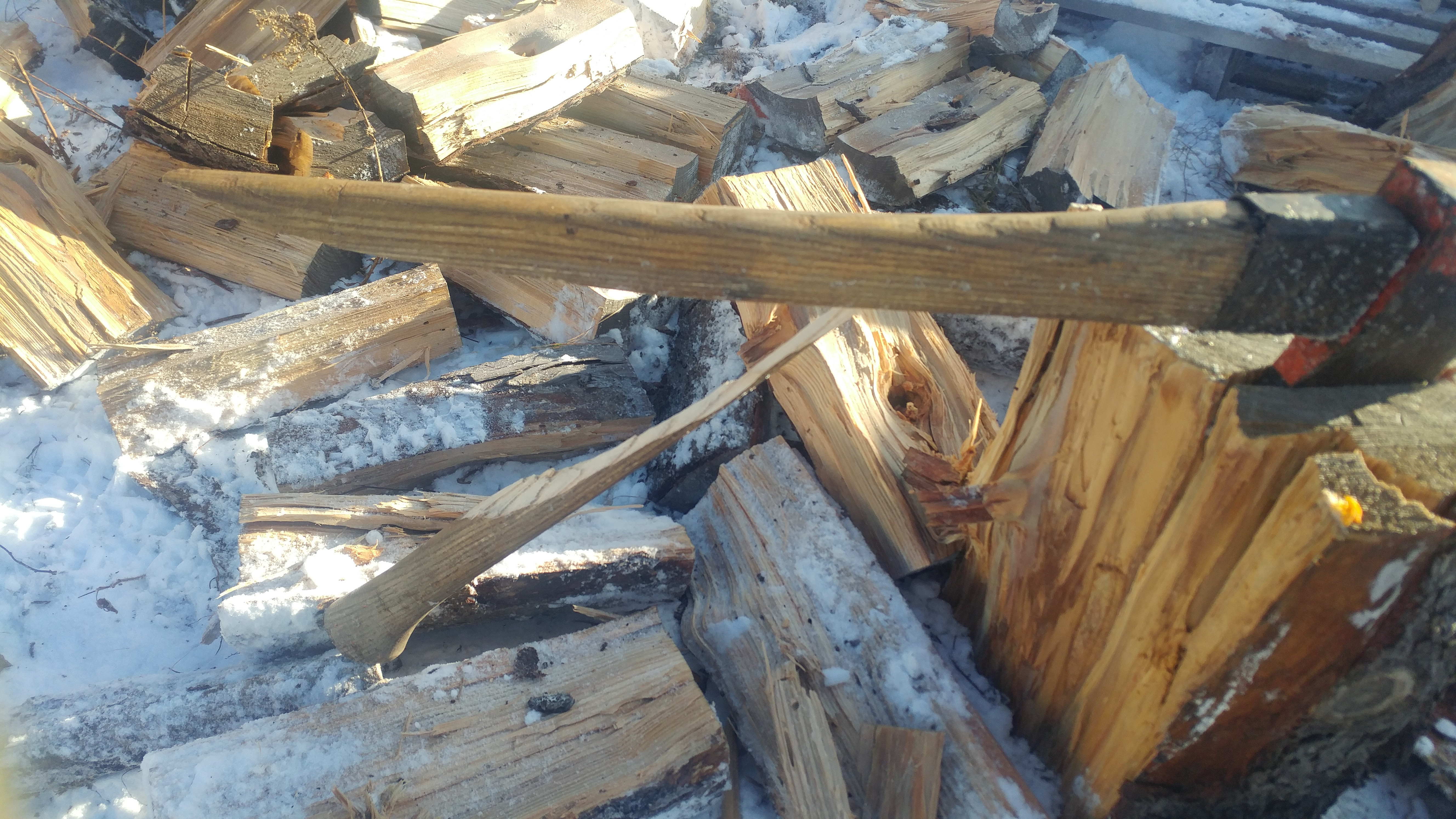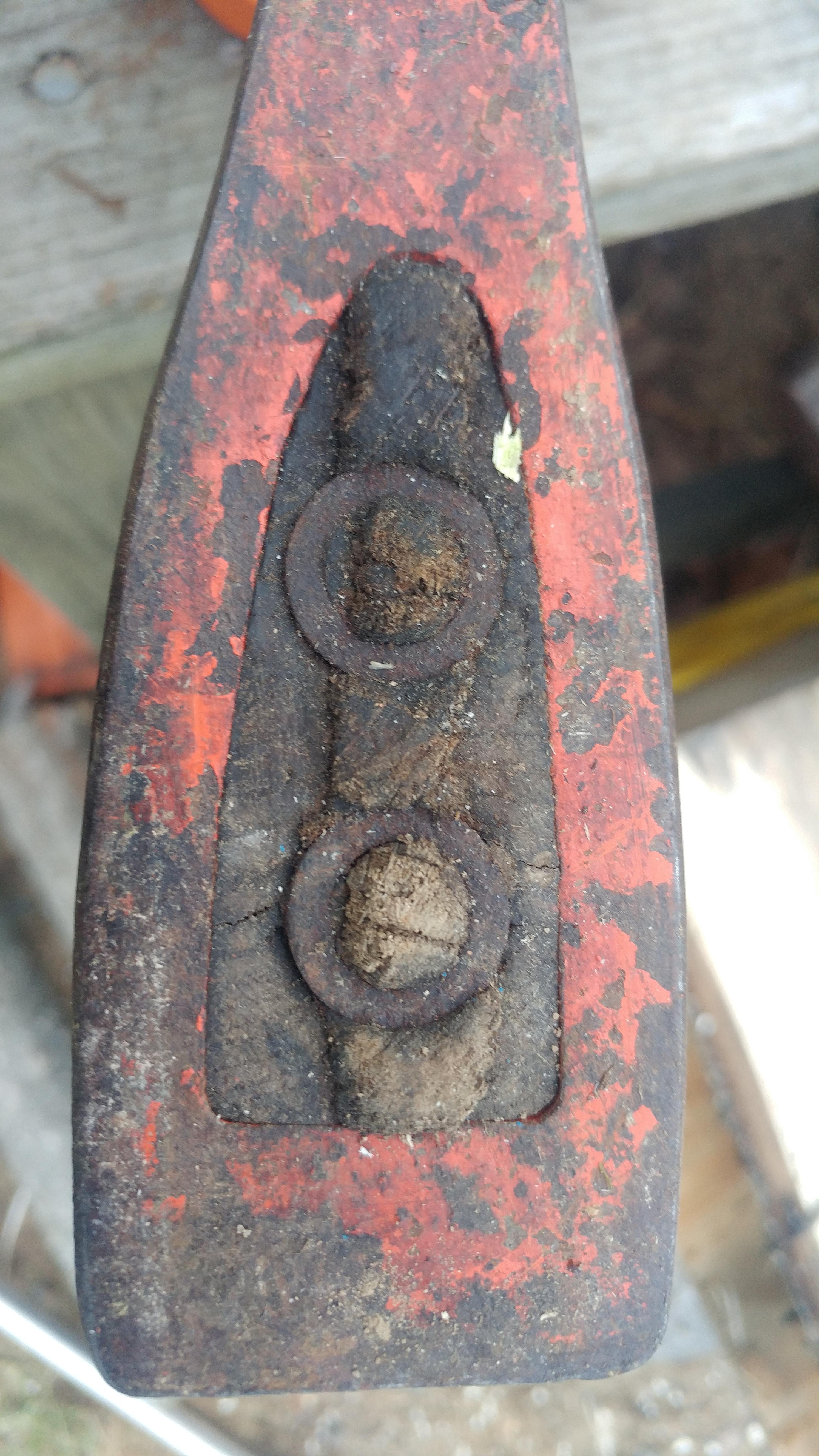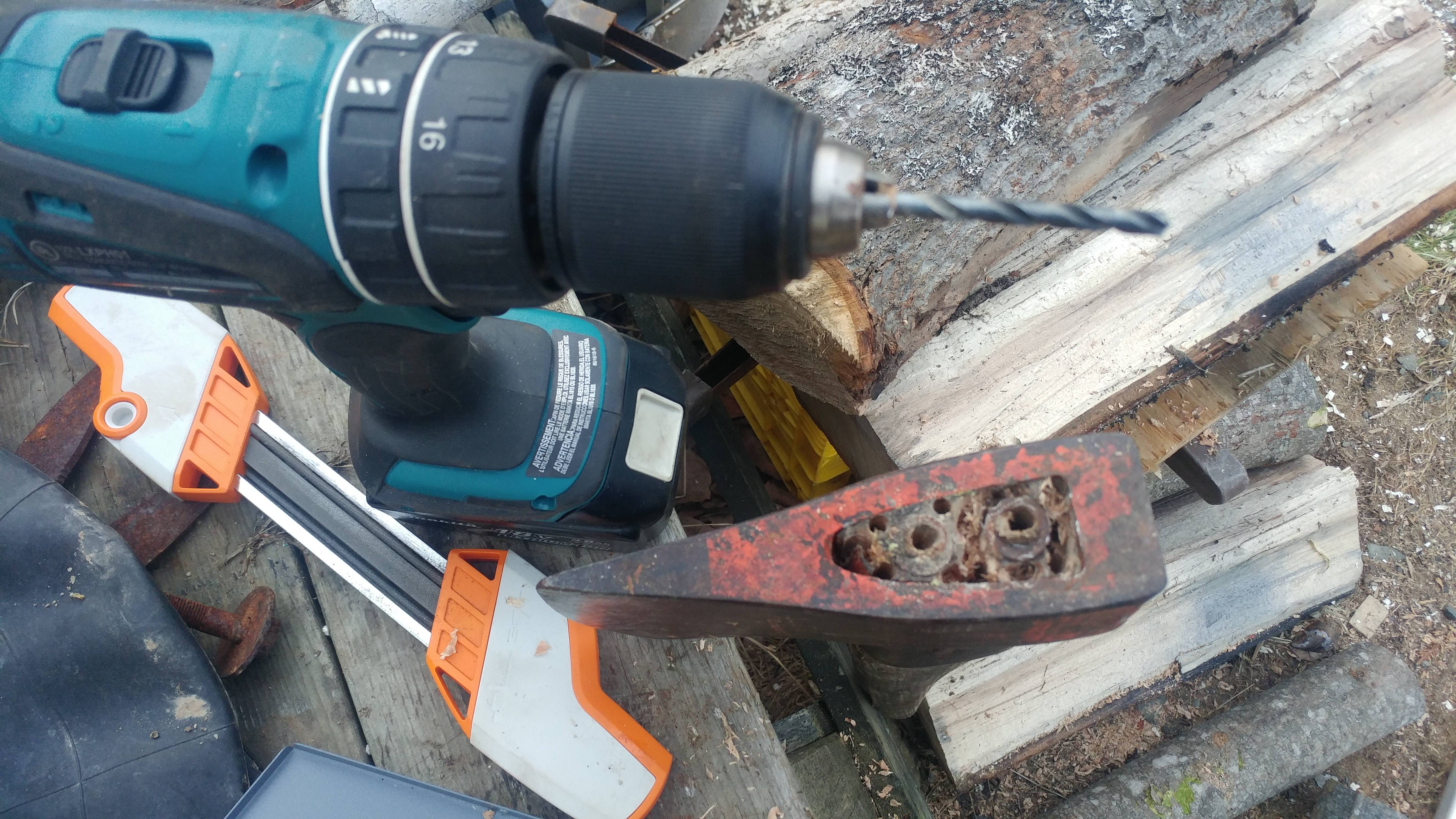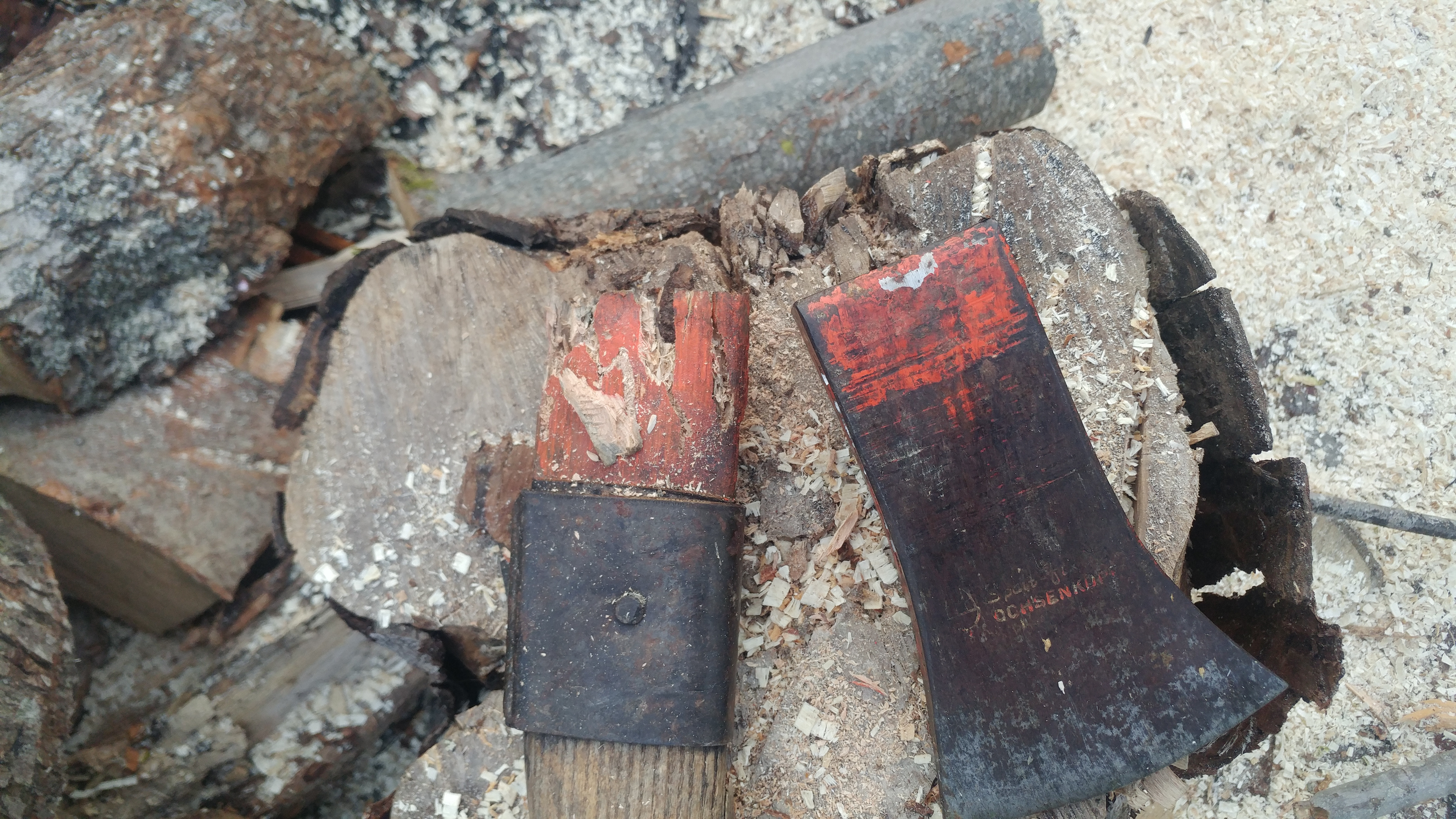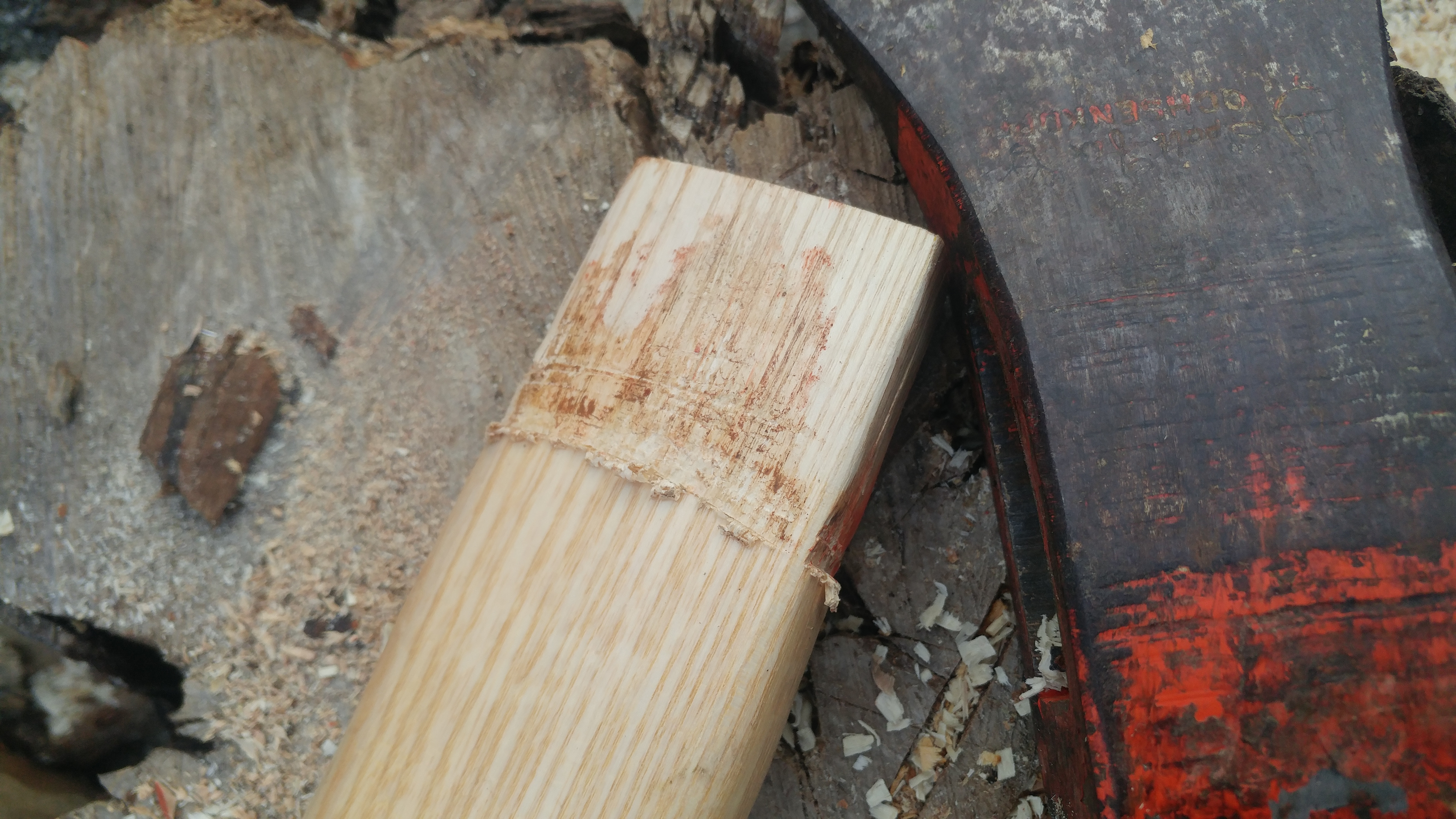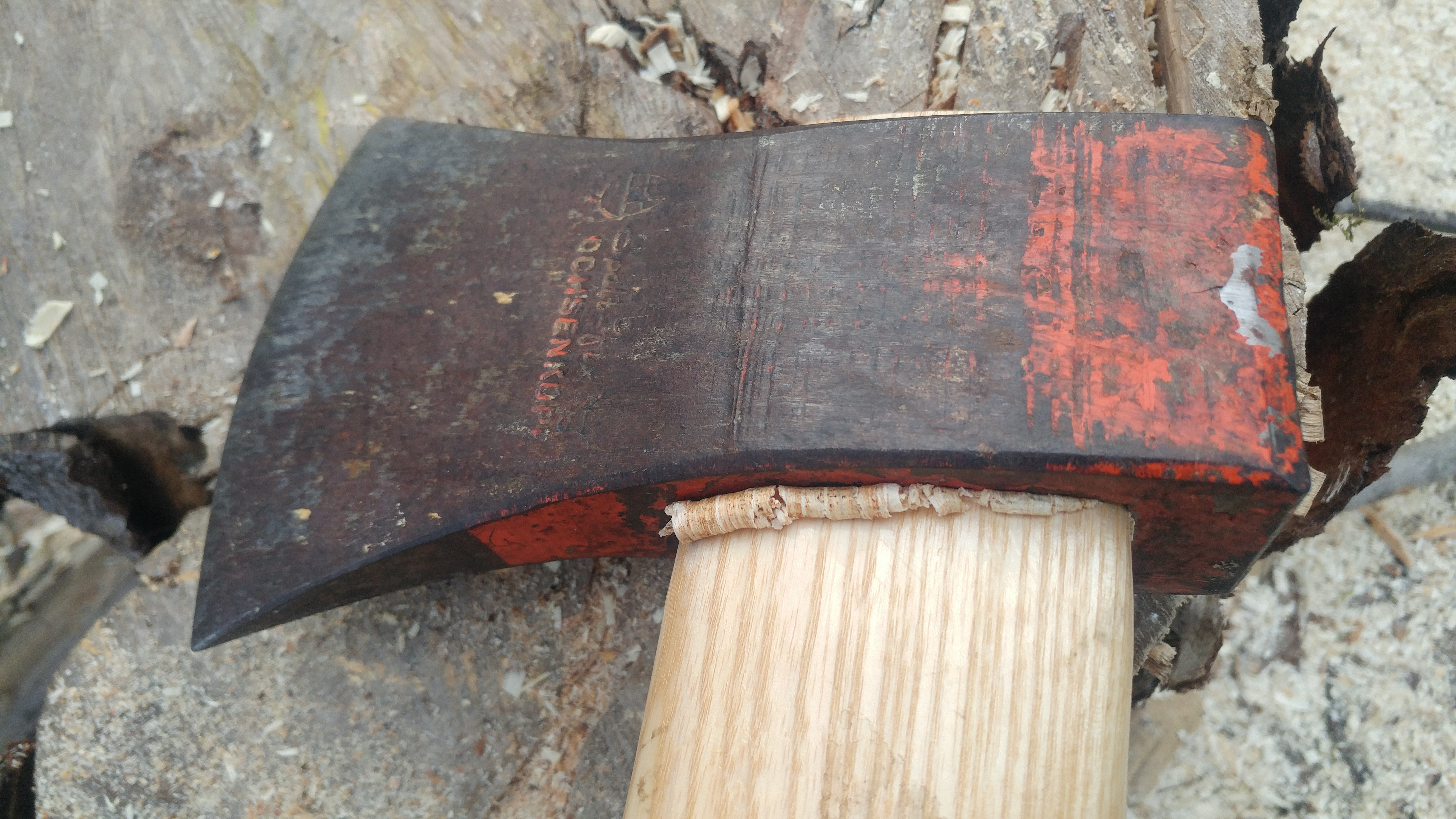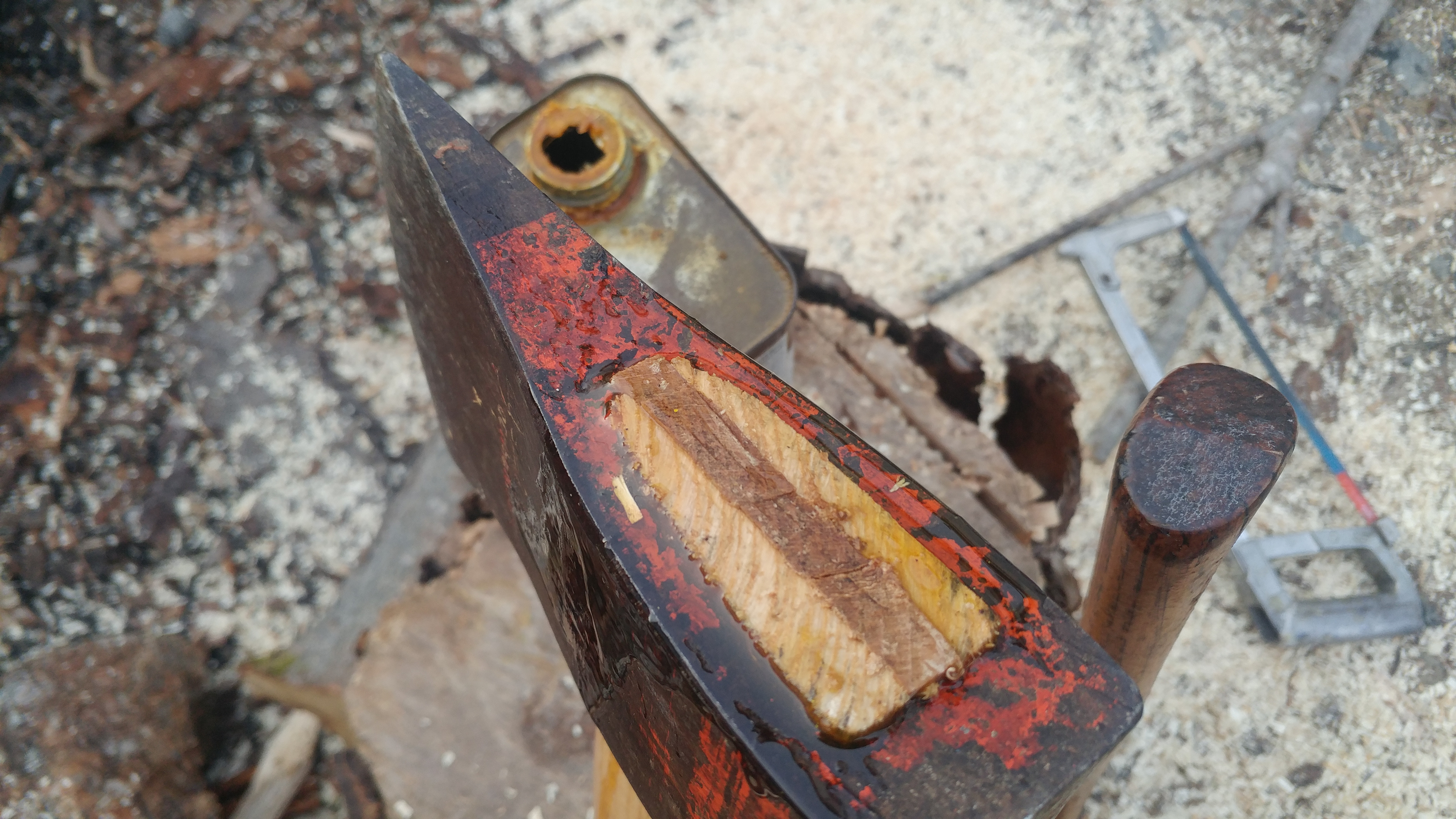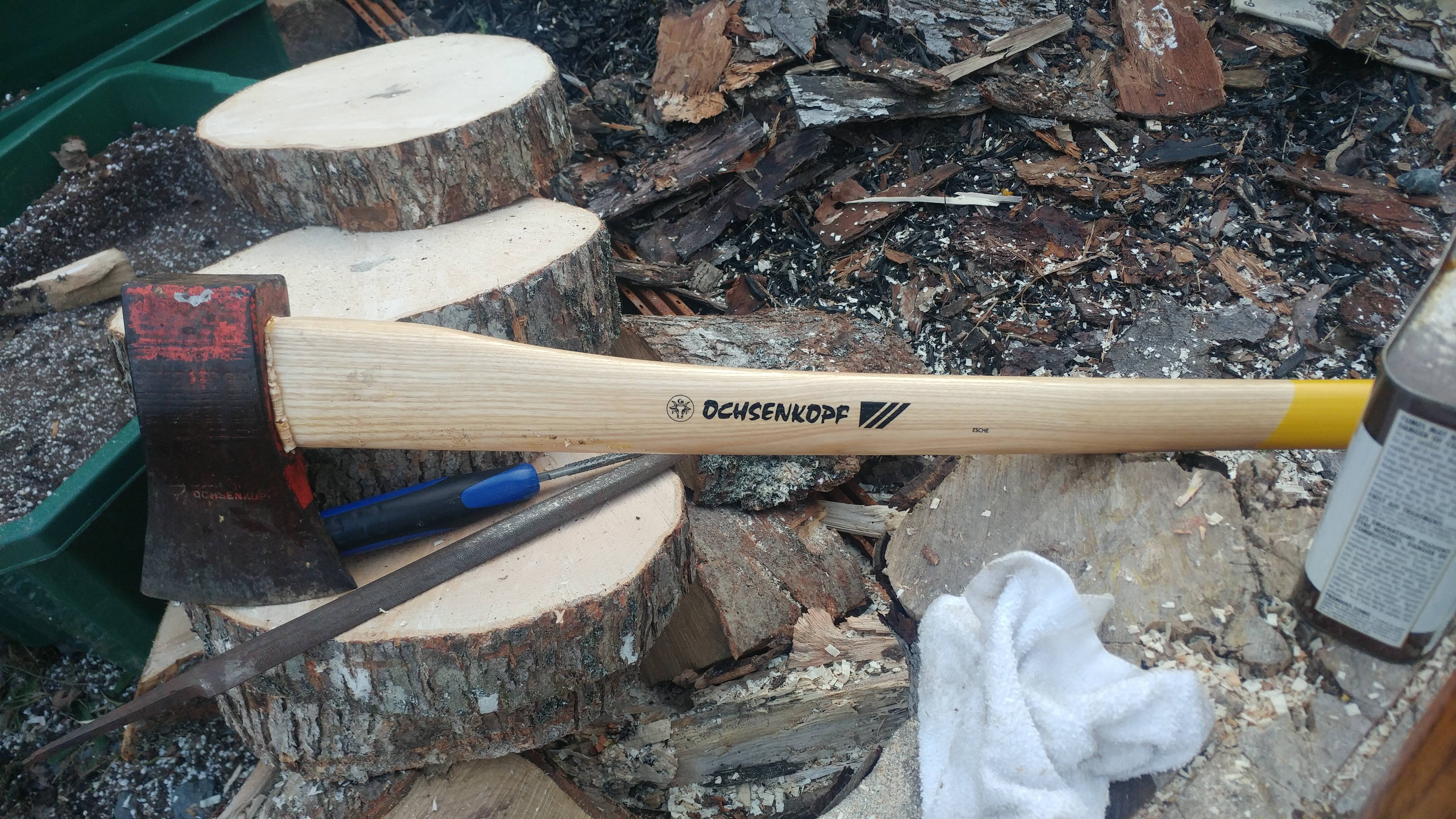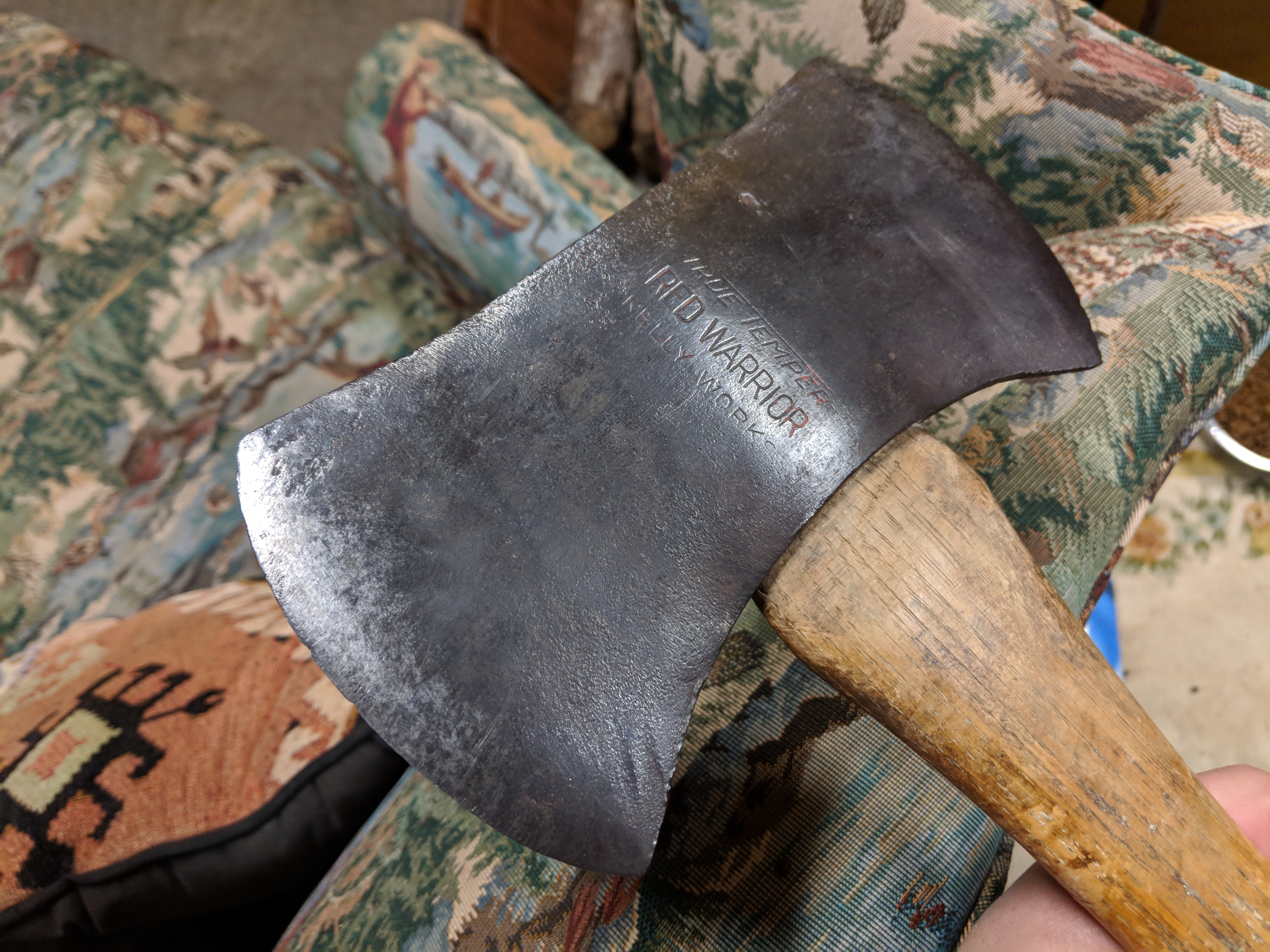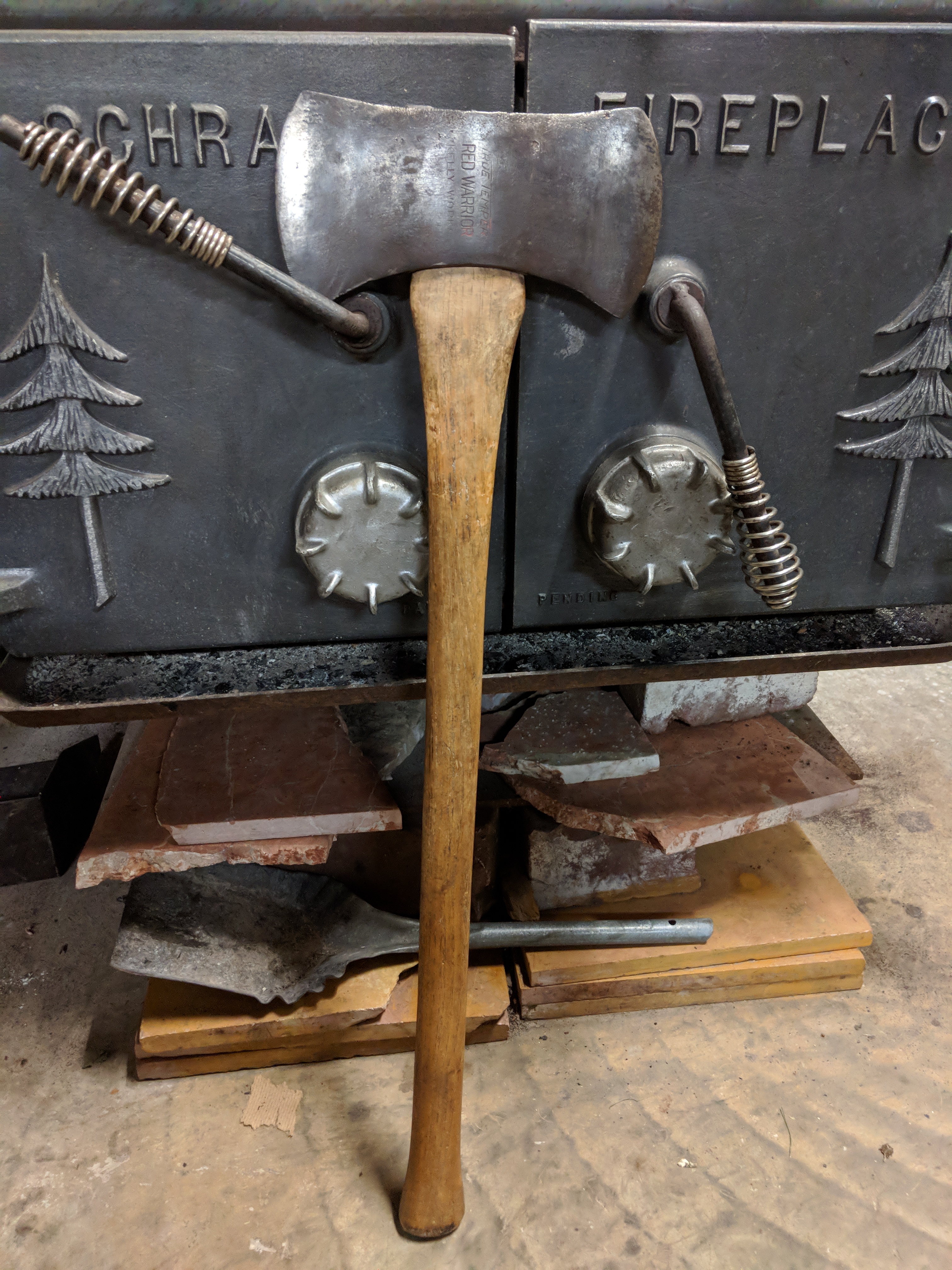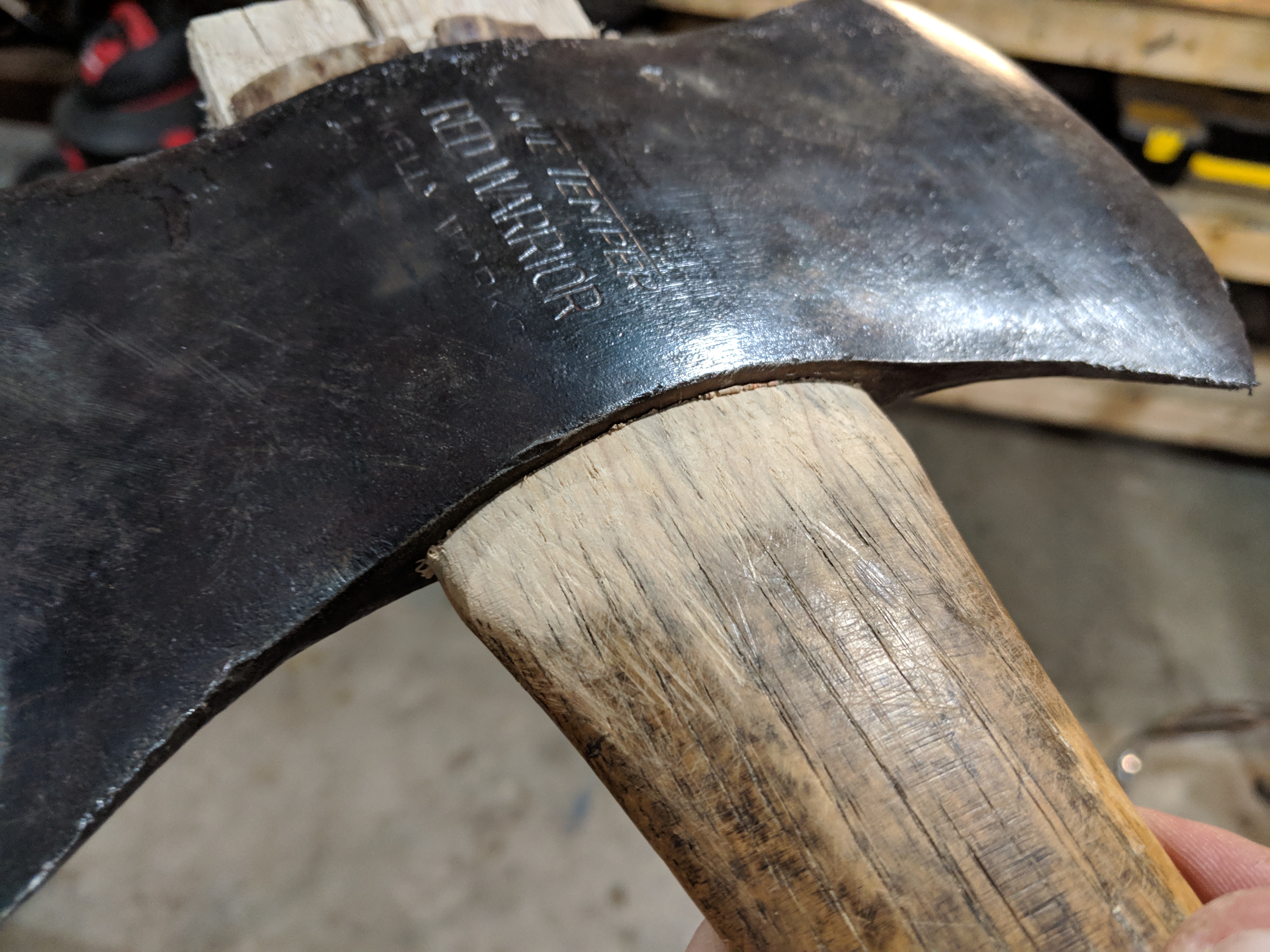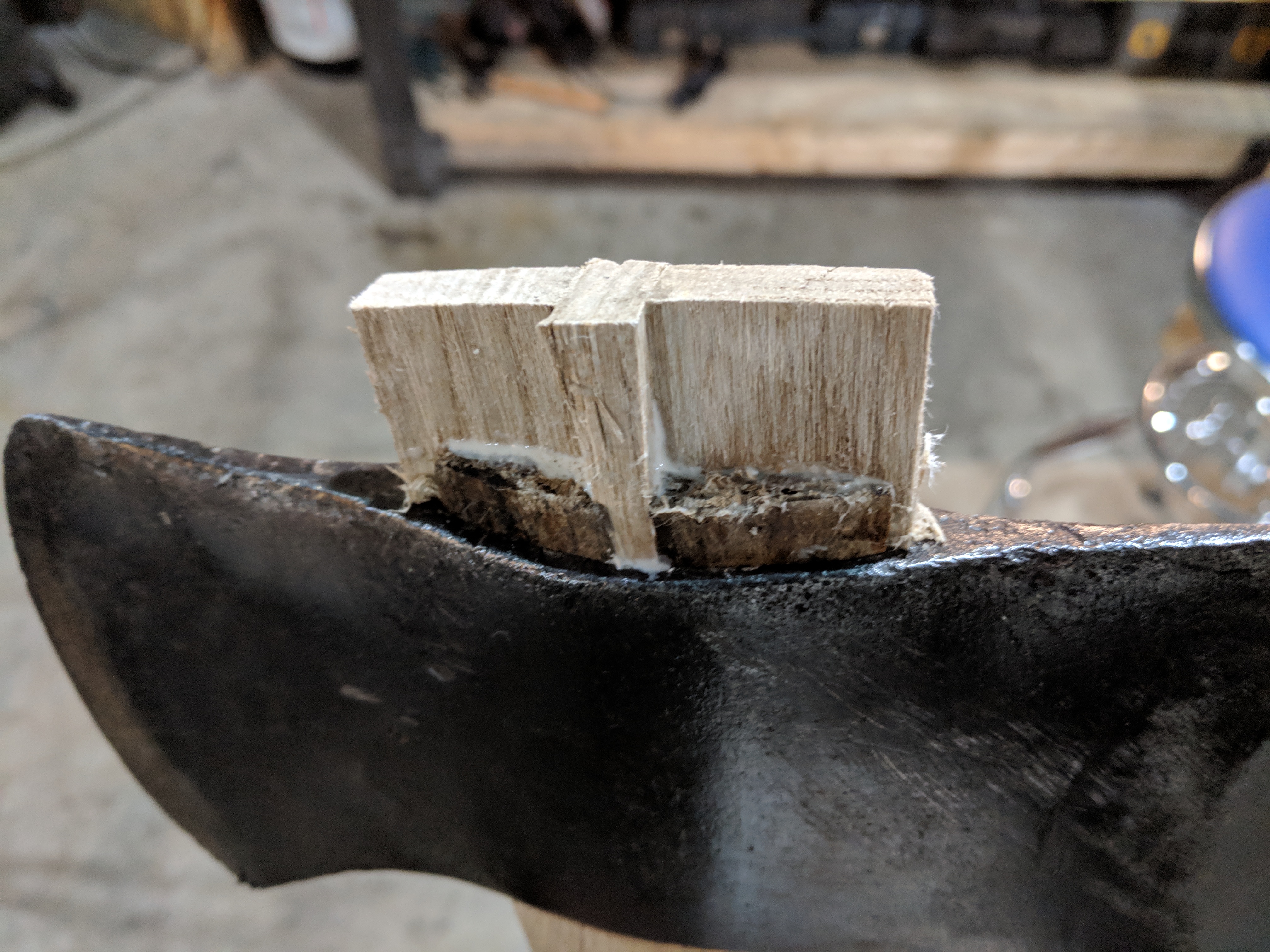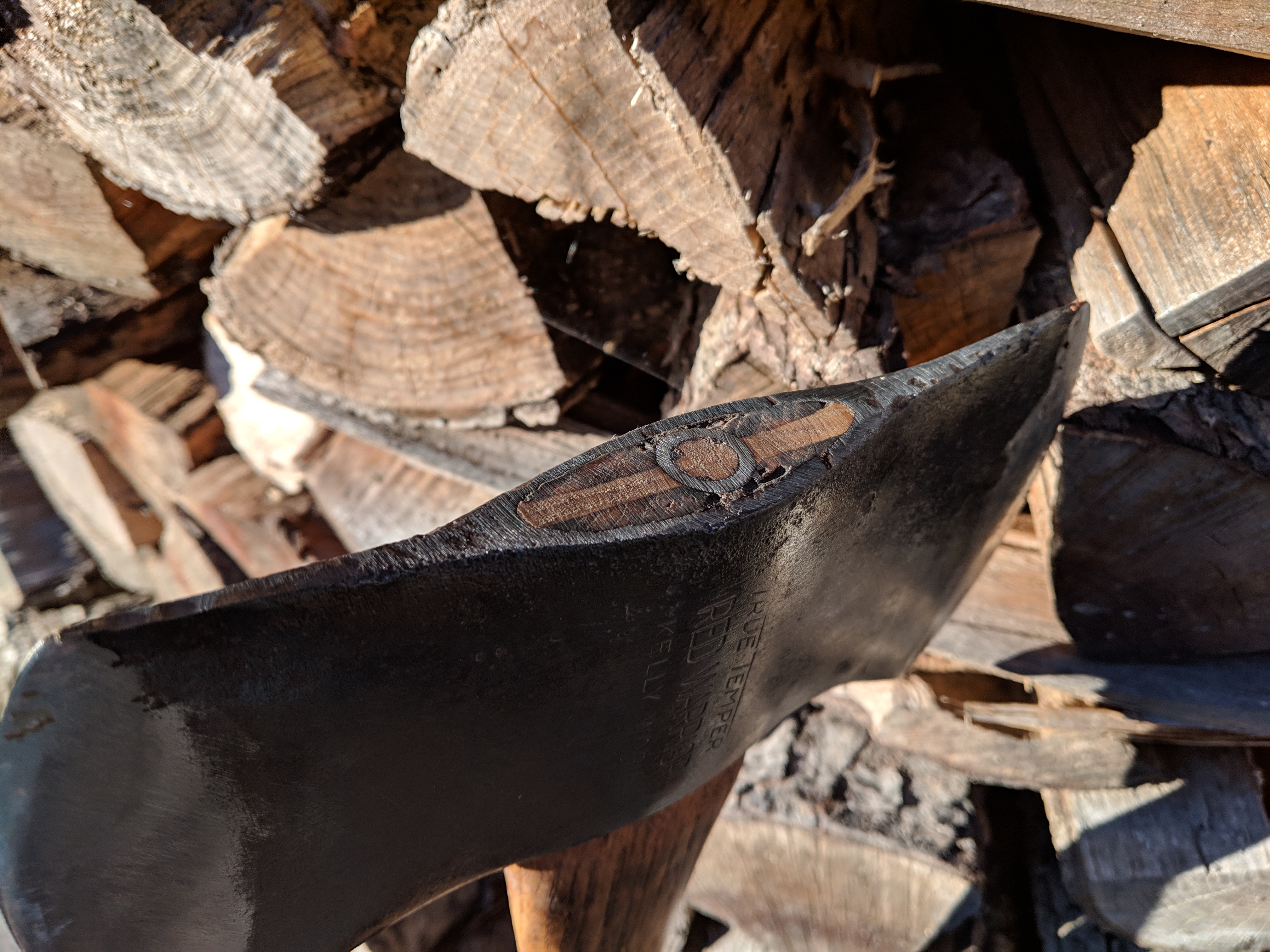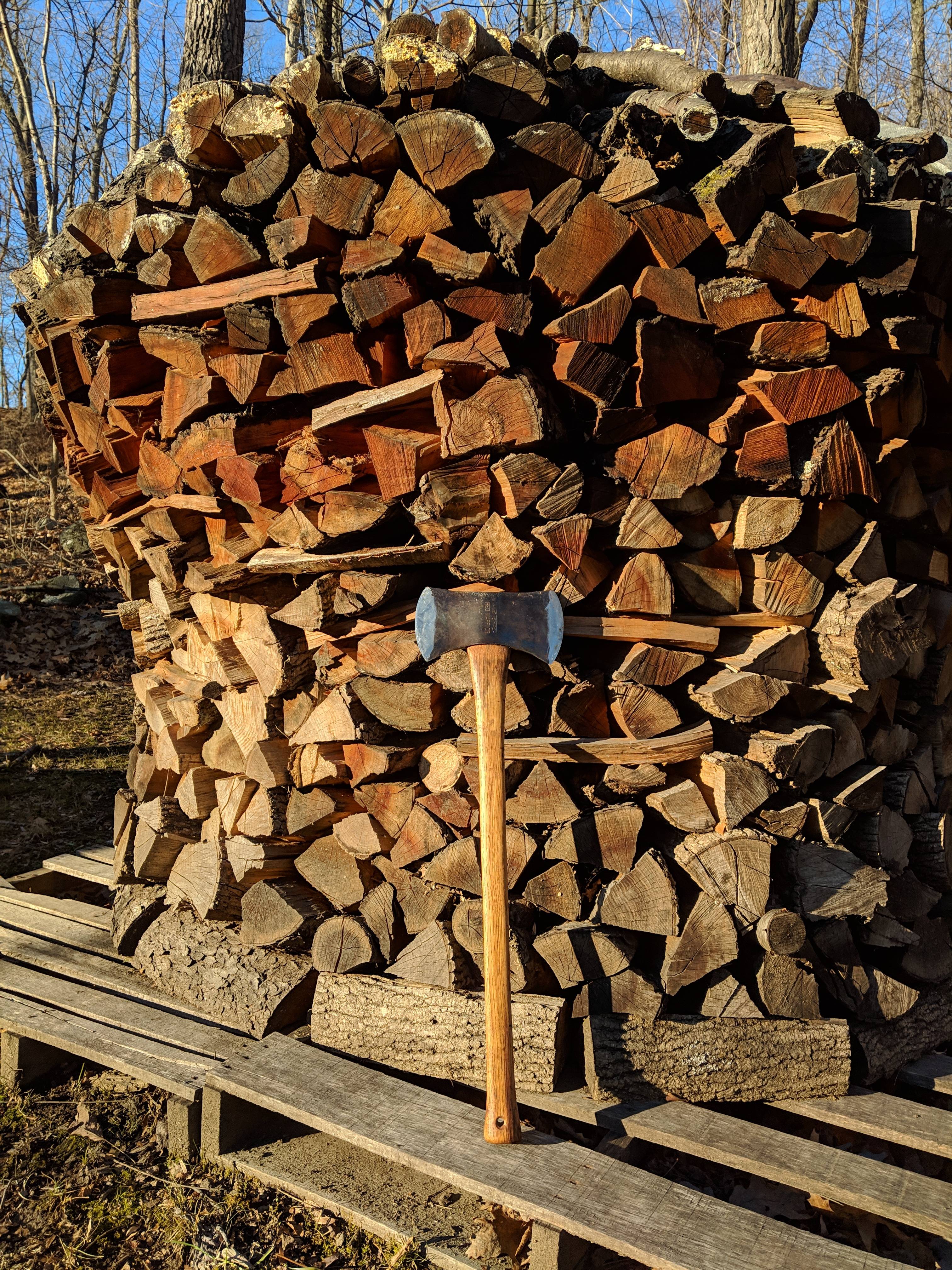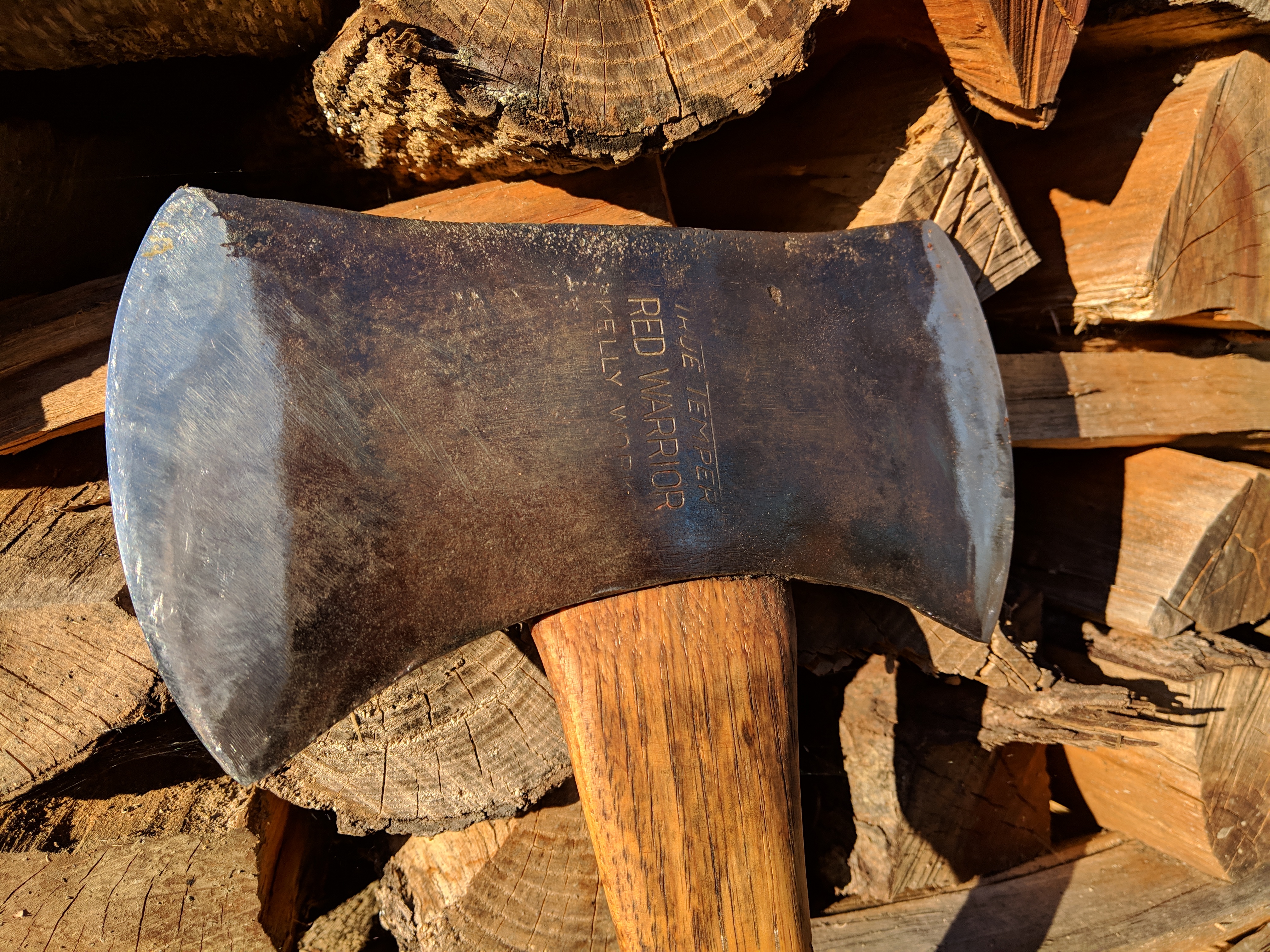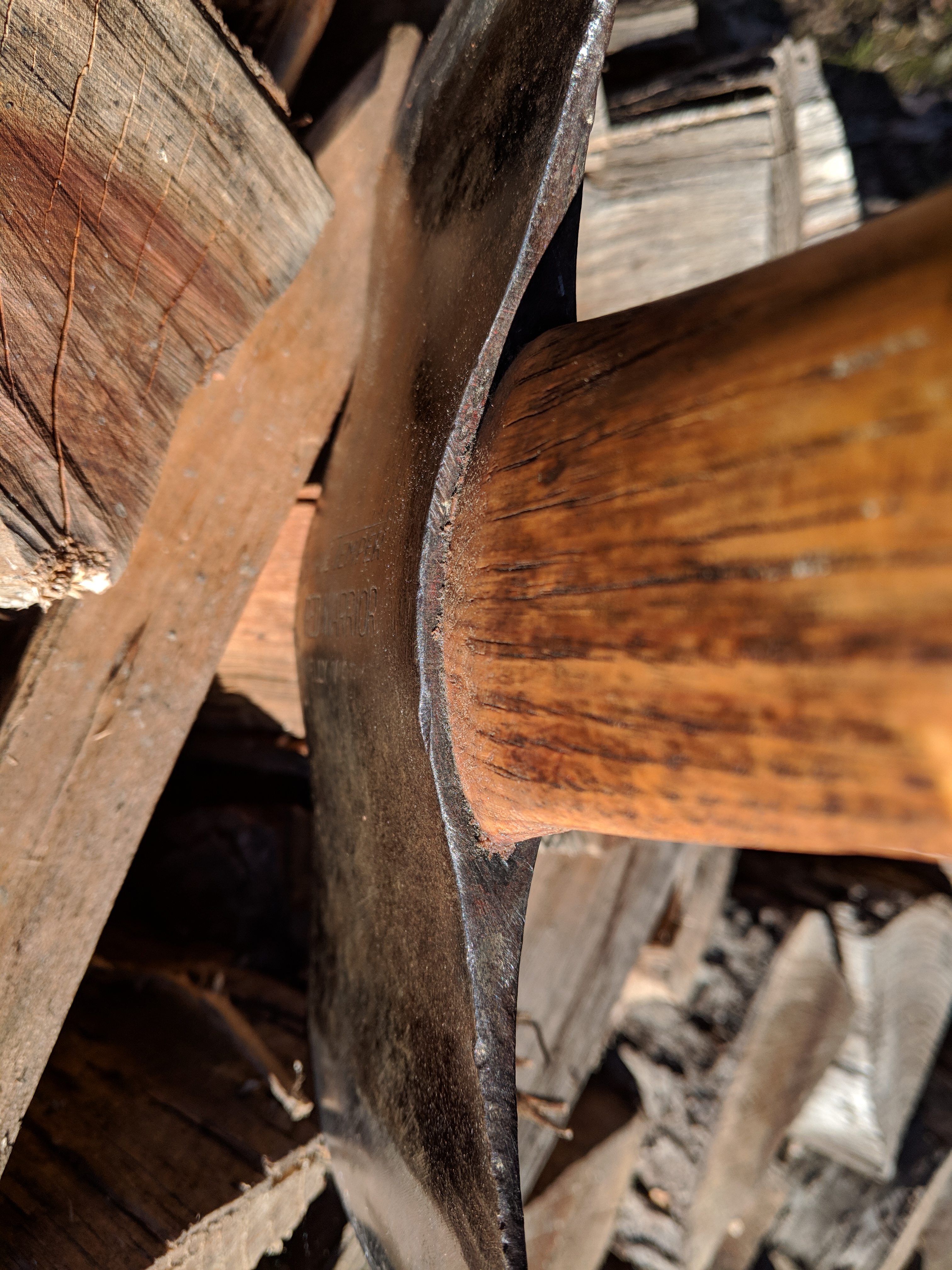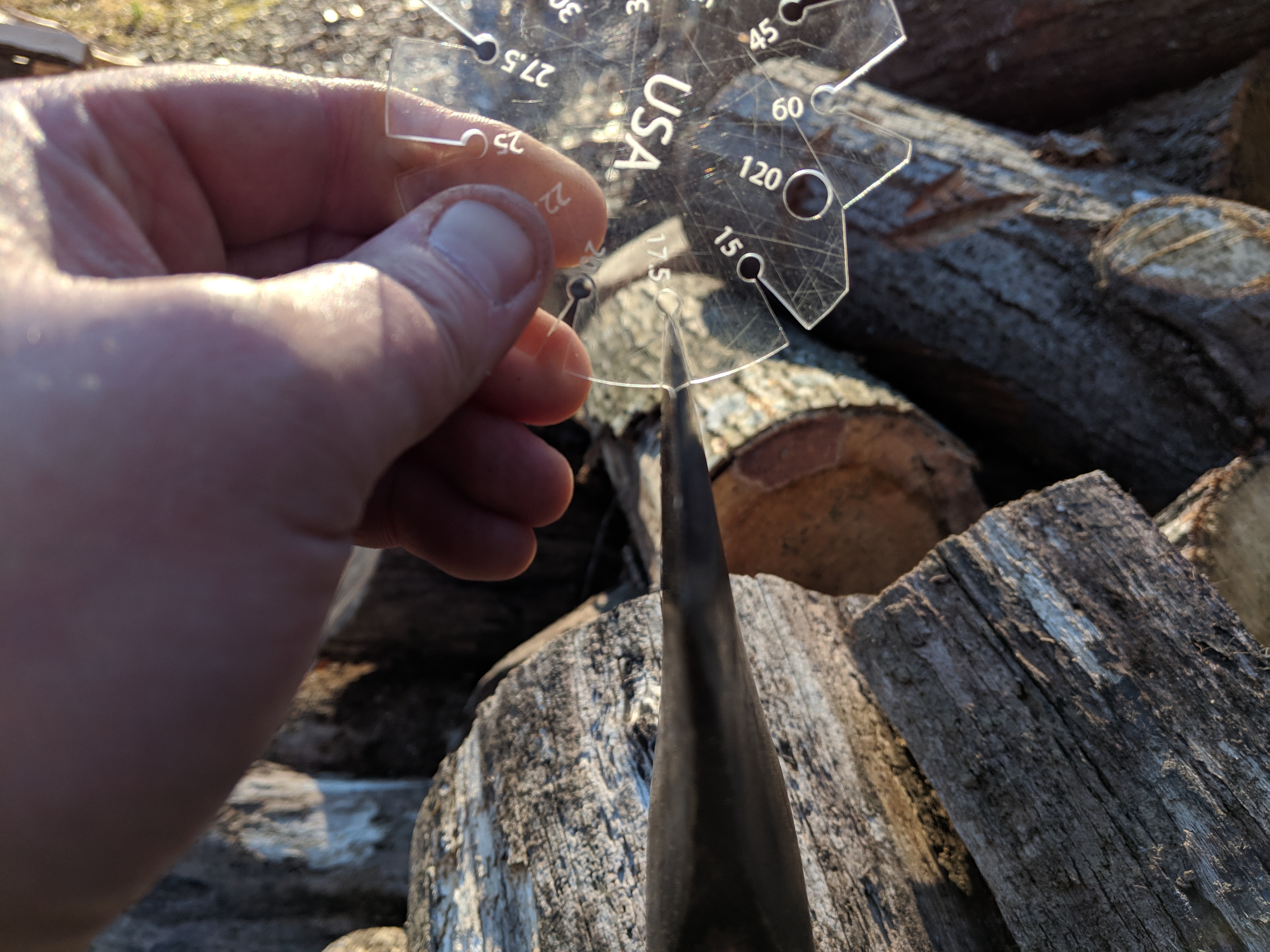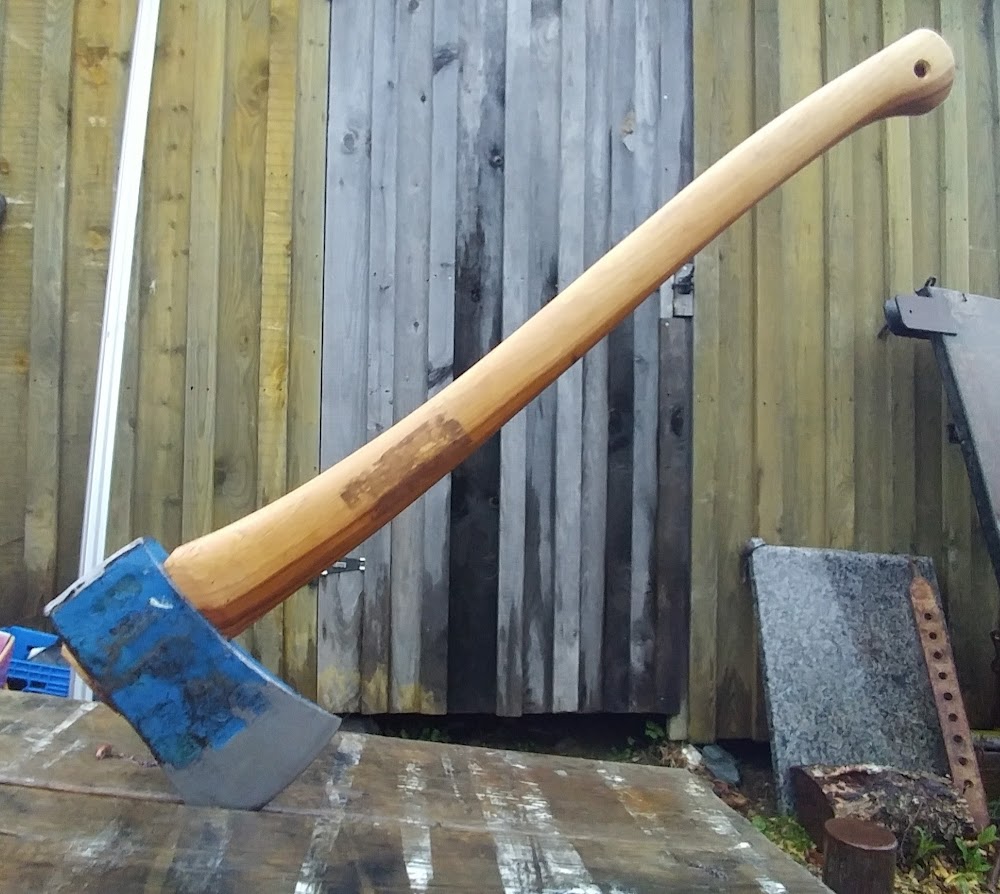I would be happy to, have done this a number of times now. It gives an ax a natural looking patina or 'straight from the forge' look to it when the original patina has been removed during restoration. Because it is also a passive oxidation layer, it acts as a barrier for further oxidation and protects the metal. Plus, it looks great... I don't really like the look of a bright steel ax head and they always seem to be prone to surface rust if not kept up on.
Anyway, here is a run down. First, the steel is brightened up with a wire brush cup wheel and sandpaper or grinder (I use a pneumatic die grinder, just be careful not to heat up the bit and draw the temper). You want to remove any deep pitted rust, old paint, or detritus. After that, I put on Nitrile gloves and de-grease the steel with acetone. Keep the gloves on because the oil from your skin will cause an uneven finish with the rust.
Once the steel is de-greased it is ready to put in the salt bath solution made up of 3% hydrogen peroxide table salt. In the past, I've used cheap non-stick baking pans for the salt bath, but this time I used a 2 gallon stock pot that I was OK with ruining. The peroxide is then heated up near boiling (it is mostly water, so the typical ~212/100 C/F temps) - when it starts to look like it's about to roll, start adding the salt. I'll add a lot, enough to where it starts to accumulate on the bottom, but do stir it in to dissolve. Once the solution is again near boiling, I'll remove it from the heat and add the ax. This time I also used a wire coat hanger (sorry, Mommy dearest) to suspend the steel and keep it from touching the bottom of the pot. In the past, having it touch the bottom resulted in an uneven rust coating. Here is what it looked like during a dry-fit:
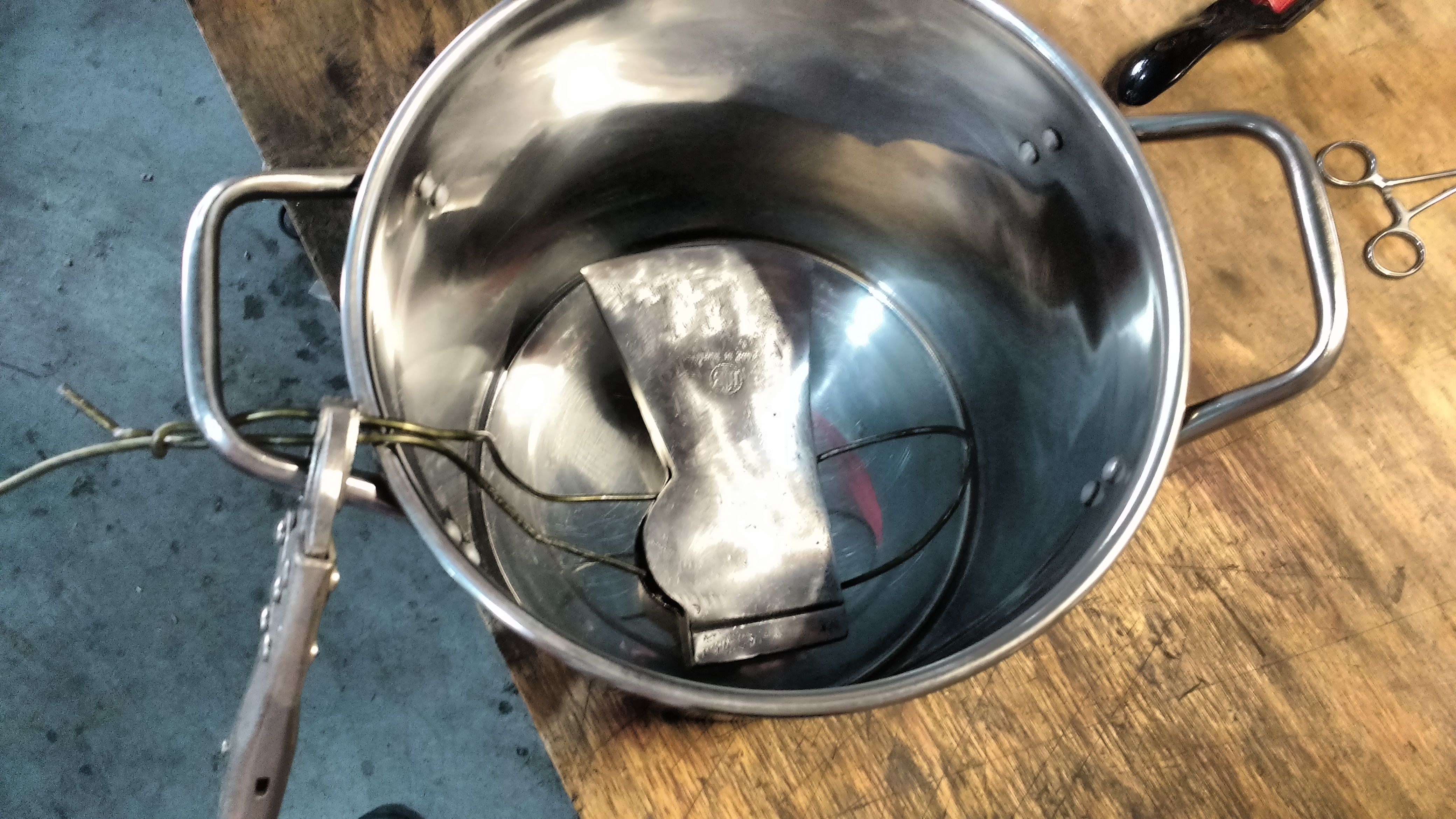
When the steel is immersed into the solution, the rusting happens very rapidly and the solution will start to bubble. The vapors emitted during the process are corrosive, so I prefer to do this outside on a propane burner. After about 5-10 minutes, the reaction will start to slow down. From here I will then remove the steel from the solution, dunk it in a bucket of water and then use an old toothbrush to scrub the rust to even out the coating. Then dry and return to the salt bath. Make sure you keep your gloves on! I'll do this 2-3 times or until I'm satisfied with the rust layer.
During this process I'll have another stainless pot with rocks or a brick on the bottom, then fill it with distilled water, enough so that it will fully submerge the ax head. This water is heated up to boiling. The rocks or brick is to keep the steel from coming in contact with the bottom of the pot, because this will be kept boiling and that will get the steel hot enough to draw the temper and ruin it. Obviously, the bottom of the pot will be much closer to the heat source and will thus be much more hot than the surrounding boiling water. After your rust layer is established, rinse off and then put the ax into the boiling distilled water. If not already, the rust layer will start to turn from a horrible brown color to a black. Be careful when placing the steel onto the rocks or bricks so not to scratch the new coating you've put on.
After about 5-10 minutes of boiling in the distilled water, you can remove it, it will be hot enough to dry itself at this point, then return it into the salt solution. Try to keep it warm if you can. I'll repeat this 2-3 more times and build layer upon layer of oxidation until I'm satisfied with the coating. Once you are satisfied, let cool to touch, then lightly scrub with some extra fine 0000 steel wool to remove the dust. At this point I also like to add a thin coating of BLO, the polymerization of the drying oil further protects the finish making it that much more durable. That's it!
This is a process that has been kicked around for the past 10-15 years, but to give credit where credit is due, I first came across the process in a thread on Bushcraft USA forum:
https://bushcraftusa.com/forum/threads/rust-bluing-a-tutorial.16456/
